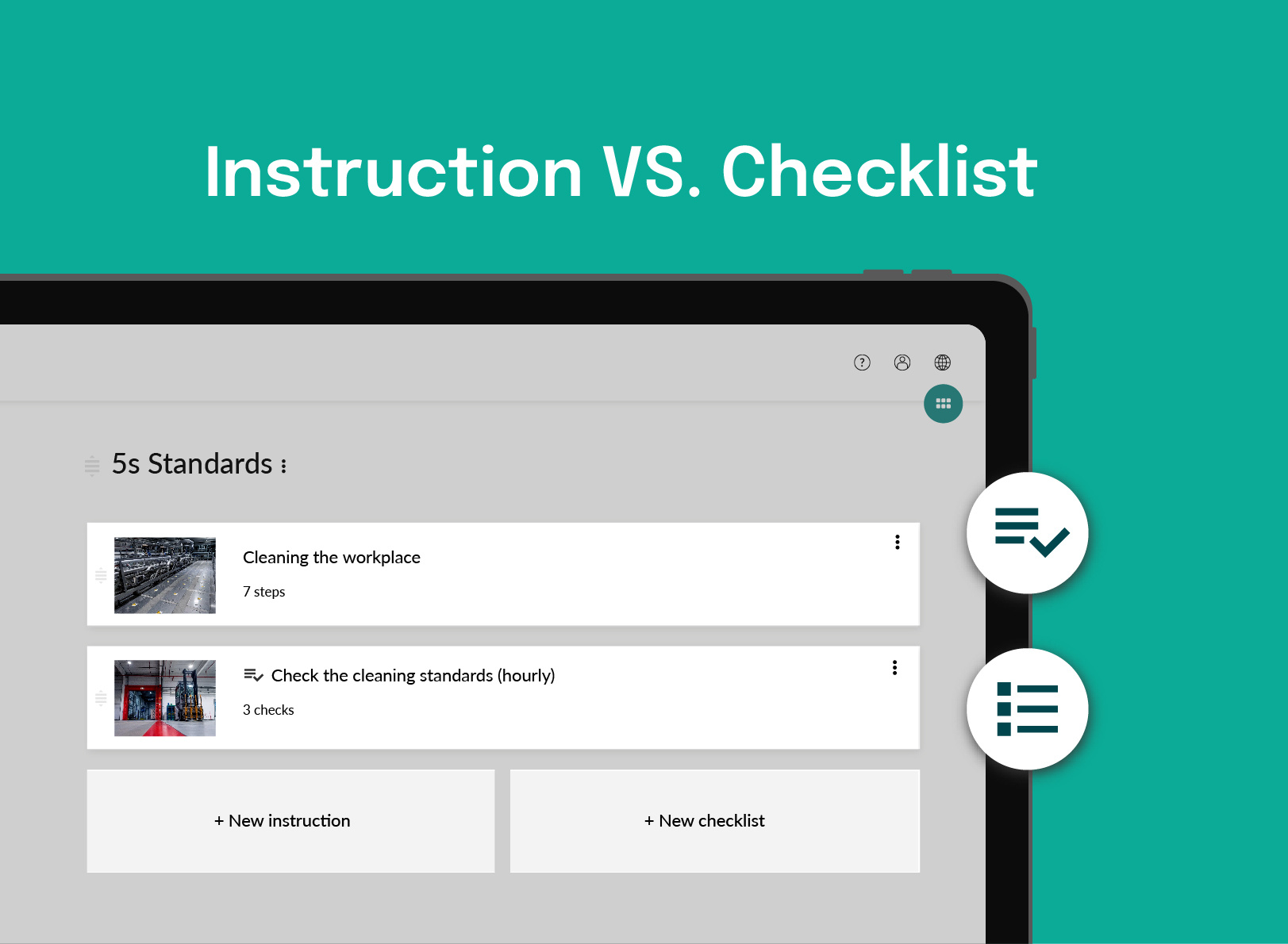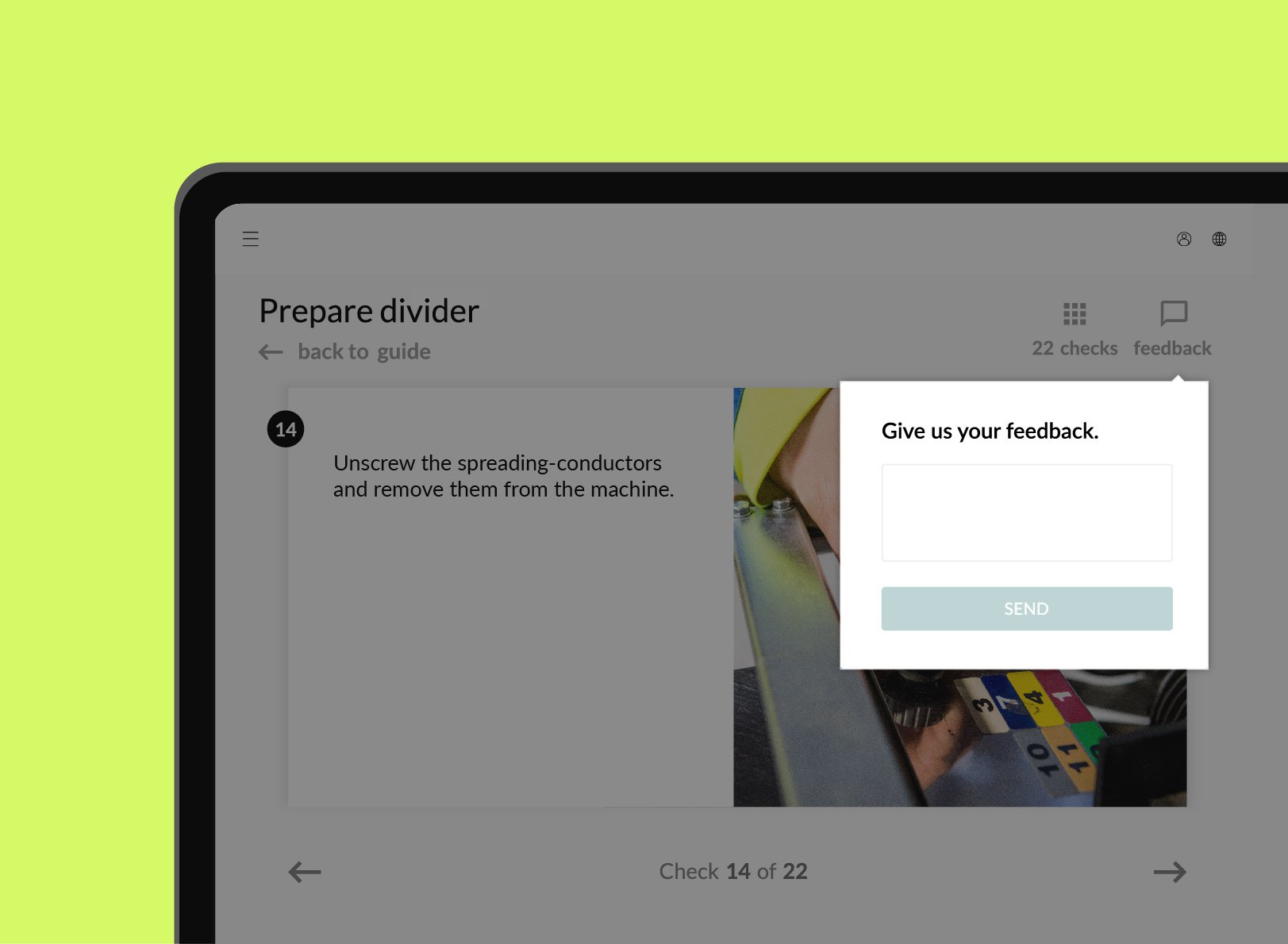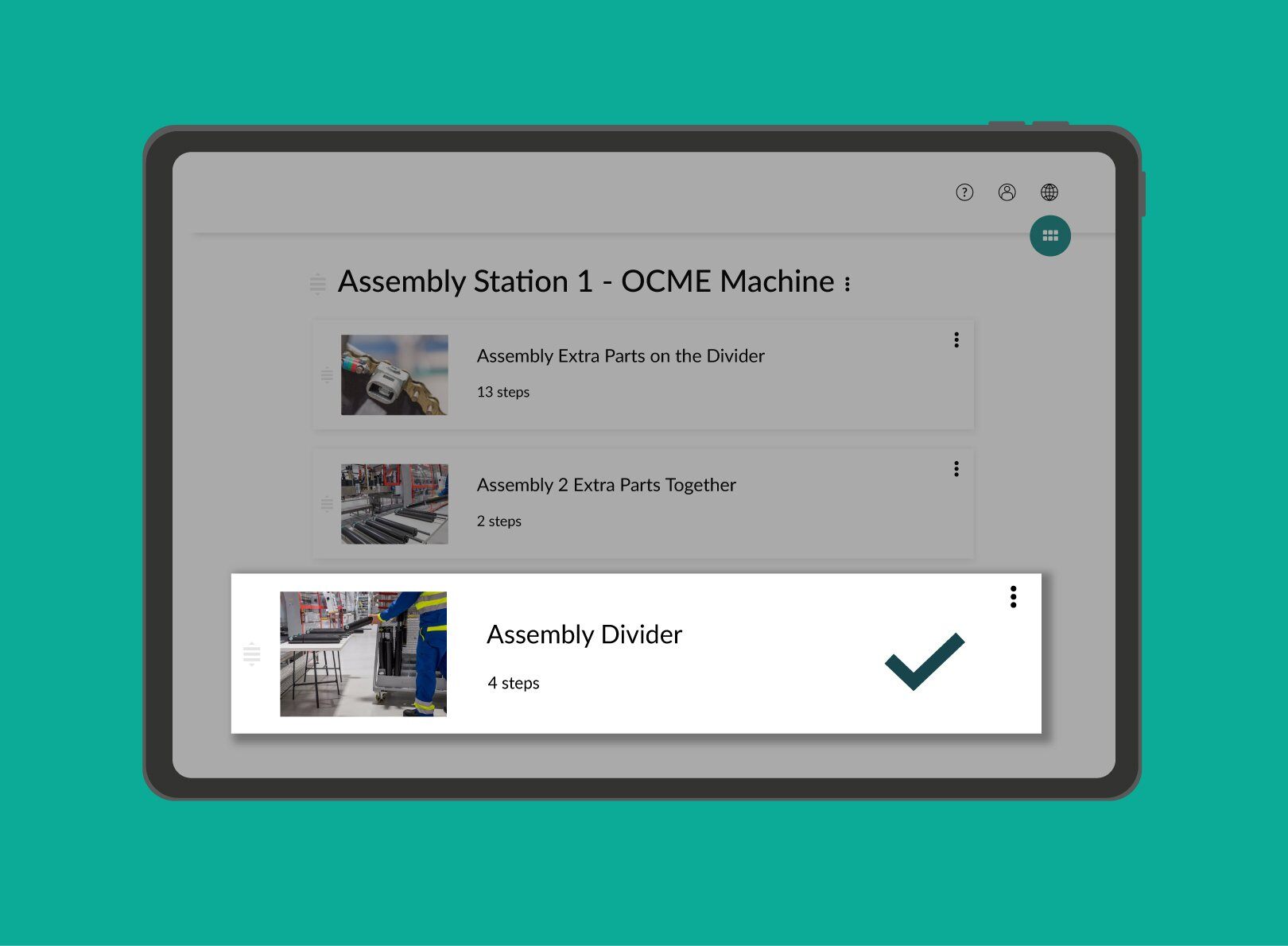

Kaizen Standards = Collecting Feedback from Frontline Teams
You can empower Kaizen standards by effectively collecting feedback from your frontline teams in manufacturing and beyond.
You’ve created some well-structured content - with work instructions, SOPs, and checklists - for your frontline teams. They’ll use this to complete their daily tasks according to standard.
You’ve followed all of the best practices - each piece of content has concrete titles and relevant tags for increased findability. Well done!
But the process doesn’t stop there. Continuous improvement - the idea that standards and work instructions can always be made better and more effective - is a critical component in your operations. In this case, we think that Kaizen is a perfect philosophy to help enact this feedback loop.
Kaizen = strategy that involves everyone in an organization to achieve regular, incremental, continuous improvements to the manufacturing process.
And the most effective way to empower the creation of Kaizen standards? Ask the individuals who know the processes the best, and give them a space to contribute their ideas. We’ll go over how to crowdsource feedback from your frontline workers in order to make these incremental kaizen improvements to work instructions and standards.

Having a system.
The best digital instructions won’t be used if people can’t find them. In fact, they will even be ignored if they simply take too long to locate. The key is to make them intuitive to find.
It’s a fact that digital work instructions are an improvement over paper work instructions in terms of accessibility. These outdated SOPs required users to physically locate and then parse information that was often complex and difficult to parse. There’s a real industry term for these expensive minutes spent looking for a binder or manual - motion waste.
Why do teams need to spend time improving SOPs, work instructions, and checklists if they’ve already taken the time to produce and review them?
Mistakes in production environments can be very costly - and potentially hazardous - which makes it essential to continuously implement tips, warnings, and new process knowledge as it comes to light. Your frontline employees are an amazing source of knowledge - they can provide you practical feedback, and using a digital platform helps you to easily incorporate these crowdsourced improvements.
Most common reasons why you'll need improvements:
- Instructions have unclear or multiple interpretations.
- Something changed.
- Knowledge or jargon gap between writers & (new) users.
- Lived experience from seasoned workers.
Whether the work instructions are new or if they’ve been around for a while, things might change or new (often seasonal) employees might find it hard to understand relatively jargon-heavy instructions their predecessors already knew. On the other end of the spectrum, it might be in-house experience that can inform a better or faster way of performing a task.
To prevent avoidable mistakes and to optimize workflows, you need a system in place to help you easily update and improve content.
 Build opportunities to collect feedback digitally into your standards to help capture improvements, tips, and fixes in your processes.
Build opportunities to collect feedback digitally into your standards to help capture improvements, tips, and fixes in your processes.
1. Methods to collect frontline feedback.
There are multiple ways to collect feedback from your frontline teams. For the best results, try to incorporate them them all wherever relevant.
- Visit the production area or work site.
Observe the location where the instructions are needed yourself. Use all your senses, look around, see what’s available, what’s visible, try to go through the workflow yourself, etc. - Collect feedback digitally.
Digital tools make it easy to collect feedback for specific pieces of content. With the click of a button, frontline workers can share their feedback and add quick comments with the particulars. - Talk to the users.
The open-ended nature of conversations make it possible to receive feedback that you might miss if you depend on digital feedback only. Talk to frontline workers using the work instructions daily, but also those supervising the work or maintenance workers to get a well-rounded perspective on how the work instructions are used.
2. Getting feedback that’s actionable.
You know who to ask and where. Now let’s make sure you ask the right questions.
Feedback should:
- Identify possible improvements.
- Let you prioritize action items.
- Return actionable feedback.
To achieve all three, your questions and provided method(s) of feedback should aim to determine:
- What exactly should be changed: is something missing, the wrong order, the visuals, the choice of words, the length, etc. The more concrete the input, the better.
- If there are / what are the consequences: Is it possible to perform the task based on the instructions? And perform it safely?
The digital advantage for Kaizen standards.
Collecting feedback from your users is the core of Kaizen philosophy.
And there is no easier way to keep track of feedback for Kaizen improvements than a digital platform. It connects the feedback to specific pieces of content, pushes this information to the relevant people for approval, and can automatically update standards as they change. It can also collect and monitor the general user experience as frontline teams move through their daily work.
Digital feedback provides insight both through data and via the richness of responses to open questions. It is an element of a successful digital transformation AND a Kaizen way of working to have feedback loops that increase efficiency and prevent issues from occurring at all. Better tools make life on the frontline and in manufacturing easy by crowdsourcing expert knowledge, while implementation of improvements takes just a few clicks.
Remember, the core of any Kaizen philosophy is the steady, incremental improvement of accessible standards. Collect, store and process your frontline workers’ feedback - and keep raising the bar!
Learn more:
👉 Learn more about digital Kaizen standards for the frontline.
👉 Creating effective digital work instructions.
👉 How to Efficiently Reduce Errors and Downtime in Manufacturing
Author
Revisions
It's time to simplify frontline training
Work instructions, checklists, and skills management - all in SwipeGuide
- Cut training time by 50%
- SOC I and II compliant


